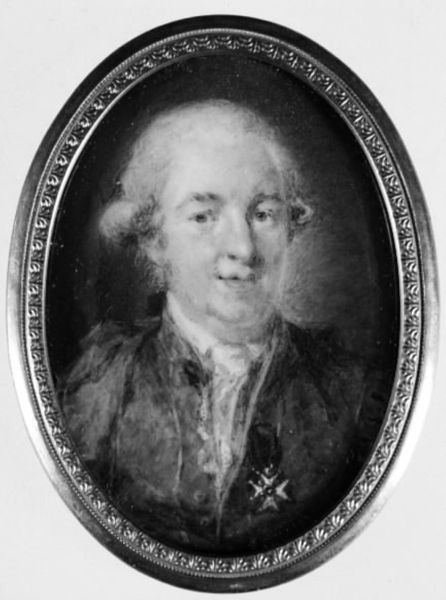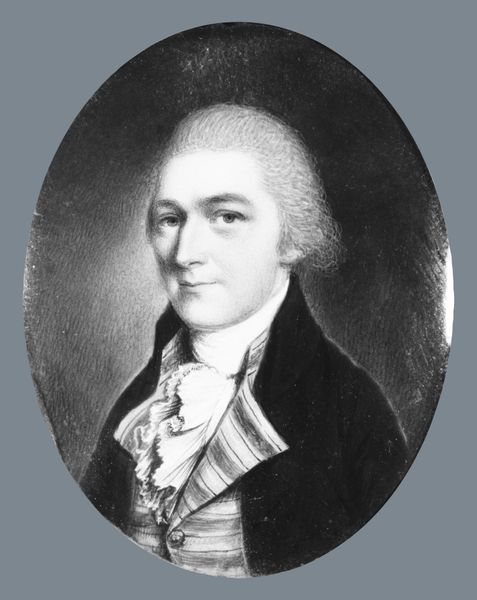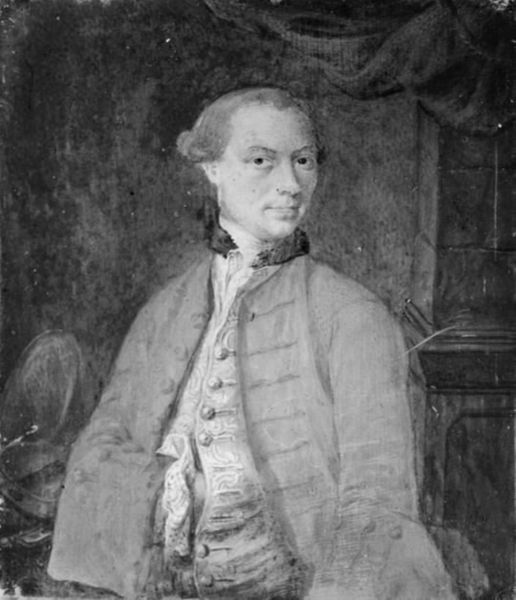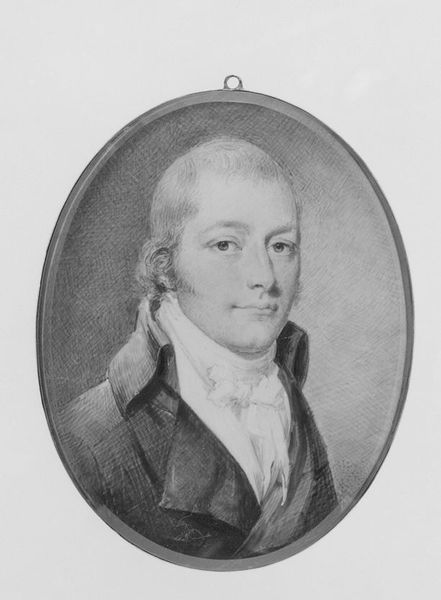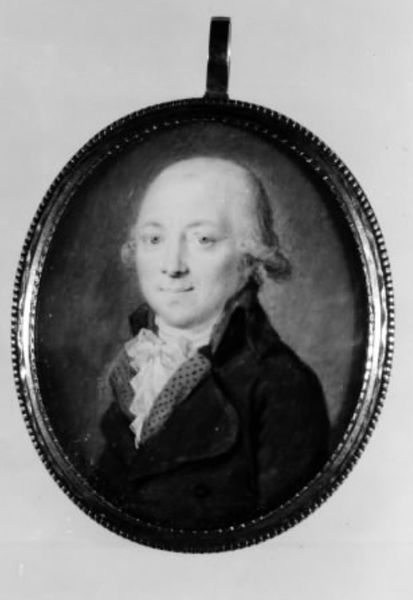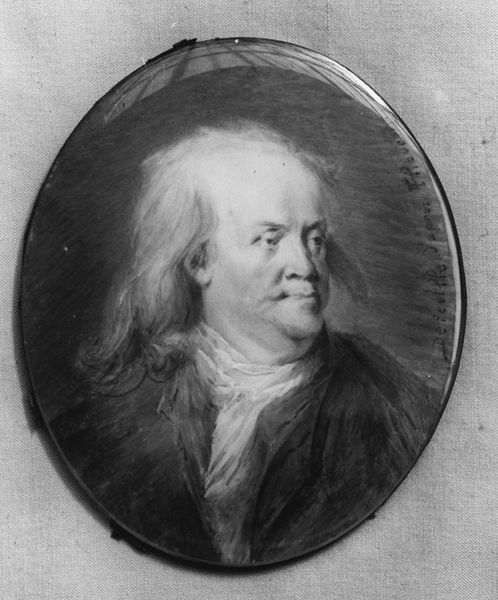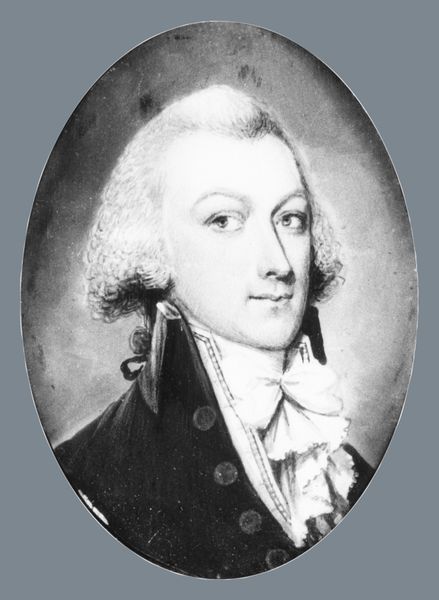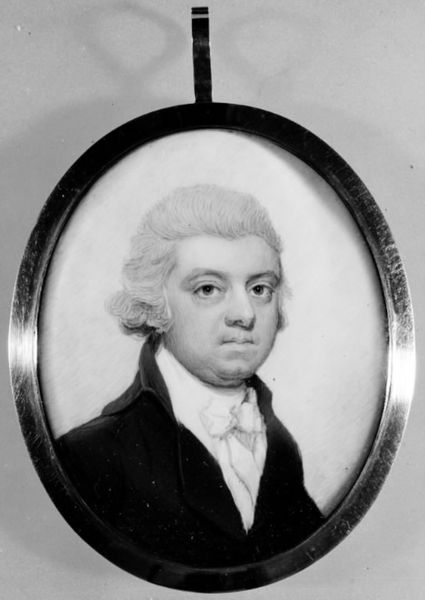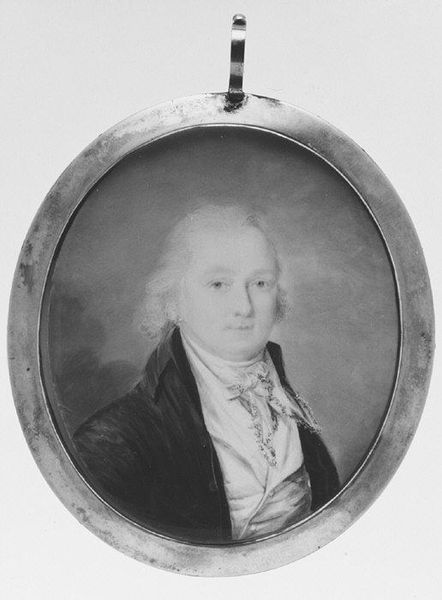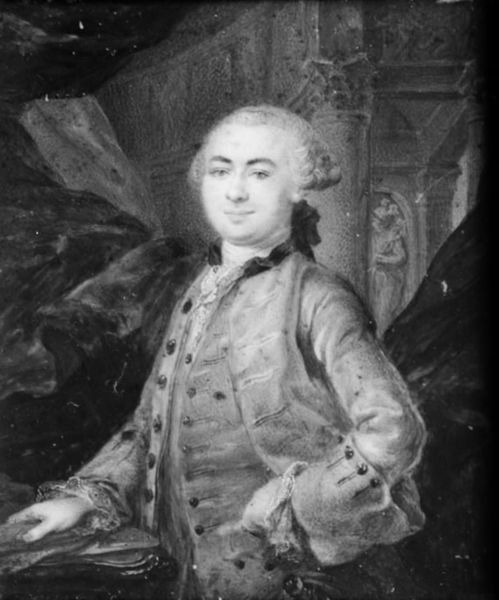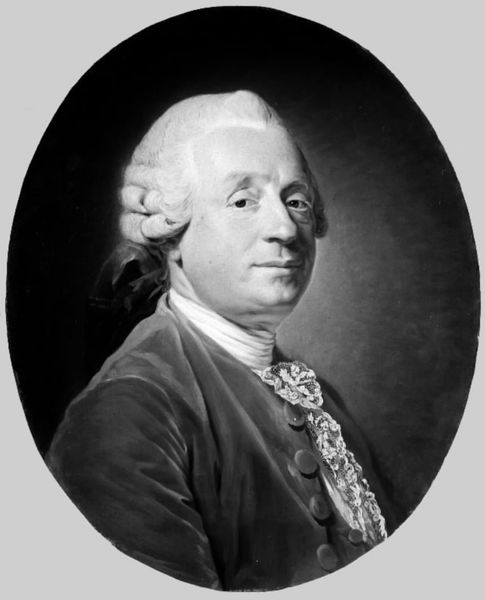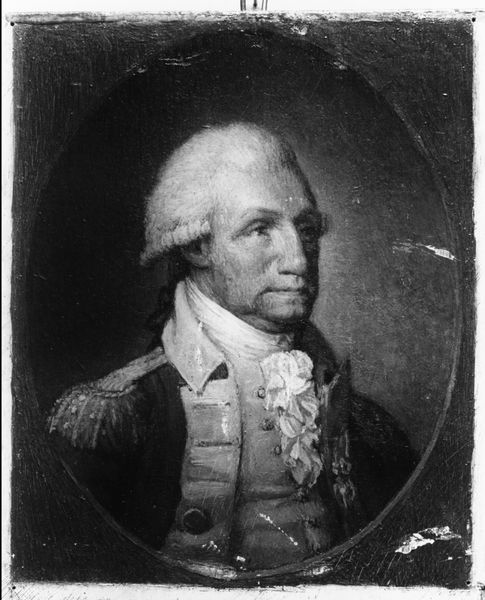
drawing, dry-media, pencil, ivory
#
portrait
#
drawing
#
neoclacissism
#
portrait
#
form
#
dry-media
#
pencil
#
line
#
ivory
#
realism
Dimensions: 7.5 cm (height) x 6 cm (width) (Netto)
Curator: I'm struck by the delicate stillness of this piece. It feels incredibly intimate, almost like catching a fleeting thought. Editor: Indeed. We're looking at a portrait of Cornelius Høyer, created around 1797 by Augustin Ritt. It's a pencil drawing on ivory, currently held at the SMK, the National Gallery of Denmark. These ivory miniatures were popular at the time as tokens of affection or remembrance among the upper classes. Curator: Ivory, so it’s tiny then? That amplifies the intimacy I mentioned; it’s something meant to be held close, a secret kept within a locket. And the greyscale... there’s something haunting about its muted palette, like a ghost caught in charcoal. Editor: The use of dry media allowed for incredibly fine lines. Ritt was clearly influenced by the Neoclassical movement, with its emphasis on form, line, and a certain idealized naturalism. These portraits, however intimate in size, served as important status symbols within a complex social system. Who was memorialized, by whom, and why, reveals much about the power structures of the time. Curator: You’re right; despite the sitter's apparent serenity, I sense an underlying tension. The high collar, the controlled curl of the wig – it’s all a carefully constructed image of propriety, perhaps hiding a world of personal complexities. It's an image of stillness striving to portray inner turmoil. Editor: I find that idea fascinating! It encapsulates how even supposedly straightforward portraits operate on multiple levels. We get a likeness of an individual, yes, but also a reflection of broader social ideals, power dynamics, and, as you keenly observe, the artist's attempt to capture something elusive about the human spirit. And, of course, these portraits cement narratives about the sitter as carefully and thoughtfully constructed historical narratives. Curator: Ultimately, the most affecting art makes us feel as though we are close enough to the work to understand more about ourselves and others, beyond societal mores. I believe Ritt accomplished that. Editor: Well said! It seems a simple image at first glance, but looking deeper it brings into focus so much about identity, memory, and how art can speak across centuries.
Comments
No comments
Be the first to comment and join the conversation on the ultimate creative platform.
